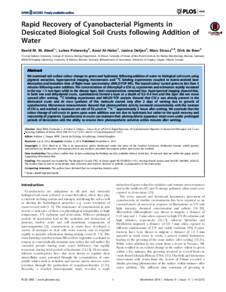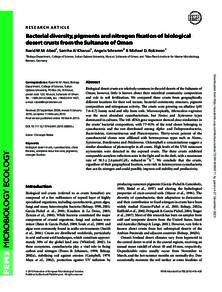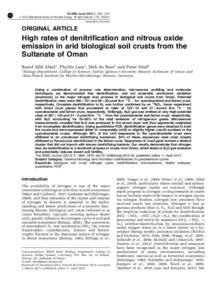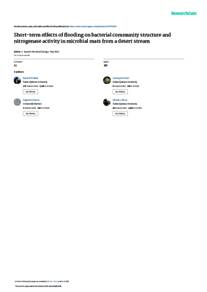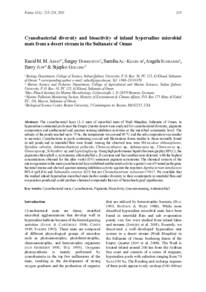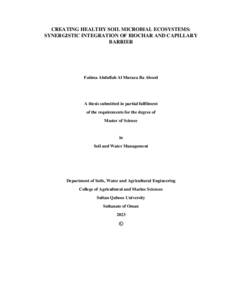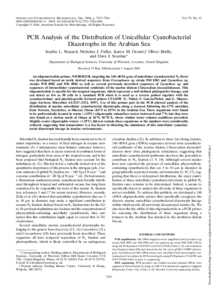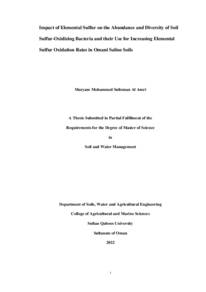Document
Rapid recovery of cyanobacterial pigments in desiccated biological soil crusts following addition of water.
Identifier
DOI: 10.1371/journal.pone.0112372
Contributors
Polerecky, Lubos., Author
Al-Habsiyah, Amal., Author
Oetjen, Janina., Author
Strous, Marc., Author
de Beer, Dirk., Author
Publisher
Public Library of Science.
Gregorian
2014-11
Language
English
English abstract
We examined soil surface colour change to green and hydrotaxis following addition of water to biological soil crusts using pigment extraction, hyperspectral imaging, microsensors and 13C labeling experiments coupled to matrix-assisted laser desorption and ionization time of flight-mass spectrometry (MALD-TOF MS). The topsoil colour turned green in less than 5 minutes following water addition. The concentrations of chlorophyll a (Chl a), scytonemin and echinenon rapidly increased in the top 〈1 mm layer while in the deeper layer, their concentrations remained low. Hyperspectral imaging showed that, in both wet and dehydrated crusts, cyanobacteria formed a layer at a depth of 0.2-0.4 mm and this layer did not move upward after wetting.13 C labeling experiments and MALDI TOF analysis showed that Chl a was already present in the desiccated crusts and de novo synthesis of this molecule started only after 2 days of wetting due to growth of cyanobacteria. Microsensor measurements showed that photosynthetic activity increased concomitantly with the increase of Chl a, and reached a maximum net rate of 92μmol m-2 h-1 approximately 2 hours after wetting. We conclude that the colour change of soil crusts to green upon water addition was not due to hydrotaxis but rather to the quick recovery and reassembly of pigments. Cyanobacteria in crusts can maintain their photosynthetic apparatus intact even under prolonged periods of desiccation with the ability to resume their photosynthetic activities within minutes after wetting.
Member of
ISSN
1932-6203
Resource URL
Category
Journal articles

